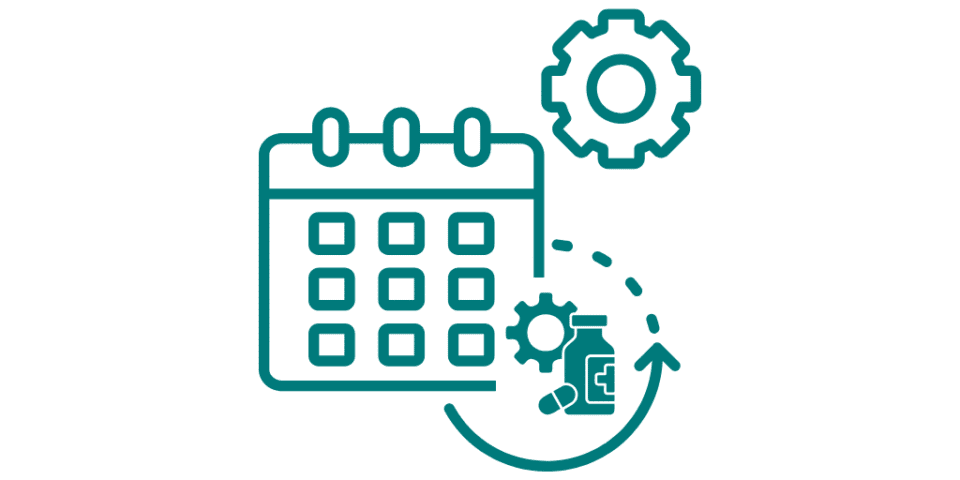Developing a Phase-Appropriate CMC Matrix
The landscape of chemistry, manufacturing, and controls (CMC) has continued to shift over time. Just a few decades ago, most drugs were developed from beginning to end by large pharma with well-defined systems of control. Today, this has significantly changed; much if not most early development (Pre-IND to Phase II) work is performed by small- to medium-size emerging biotech sponsors, many of which are virtual companies.
The goals, drivers, and challenges encountered by these smaller sponsors are significantly different than their larger counterparts. Instead of an end goal of commercializing a new drug, the goal may be to generate the appropriate interest to sell the IP or the company itself. Instead of a large team of experts who are responsible for drug development, the responsibility falls to a few individuals, and in many cases, just a single person (You maybe?).
As a result, smaller emerging biotech commonly rely on the expertise of contract manufacturing organizations (CMOs) and external consultants to help design phase appropriate CMC activities that will meet their company’s specific goals.
The challenge for planning these CMC programs is that each becomes a custom program; there is no one-size-fits-all model to be applied. A unique combination of drivers, e.g. Funding, Guidance, Timing, etc. must then be considered when designing an appropriate program.
WHAT IS THE MEANING OF THE WHITE RABBIT?
(waɪt ˈræbɪt) a person who is in a hurry and complaining of being late, like the White Rabbit character in the children's story ‘Alice's Adventures in Wonderland' by Lewis Carroll. He was late, damnably late! He scuttled like the white rabbit, continually glancing at his watch.
The Funding
For many small or virtual sponsors, funding is now a primary driver for decision making. This can often lead to conflicts between what development work “should” be done versus what “has” to be completed. Some sponsors may focus their efforts on attaining the funding rather than on the regulatory or development drivers. In these scenarios, development work that may be required for regulatory approval or studies that would aid in the longer-term development goals are delayed for a later point.
In a constrained funding scenario, which can impact both small and large companies, development activities may be given a finite amount of funding that cannot be exceeded, obtaining only the bare minimum requirements, while delaying or foregoing work that may be beneficial in the longer term.
For any initial investigational application to be accepted and then advanced, the respective regulatory agency must have a degree of confidence in the level of information surrounding the production of the drug substance and formulated product; with increasing substantiation as the development project progresses.
For ultimate marketing approval, from a drug substance perspective, information about the characterization and proof of structure, synthesis or fermentation process, testing methodologies and stabilities is essential to be included in the application or submission package. Similarly, for the drug product, formulations need to be determined, set and manufactured. Testing methodologies and stabilities with phase appropriate data need to be assessed and included.
The Regulatory Guidance
Funding ultimately drives data and the path for CMC requires knowledge expertise, and agreement. Regulatory agencies in the U.S. and in Europe require in the CMC section of applications and submissions detailed information regarding the drug substance and the formulated product in which the active will be administered.
The development goals of many smaller or virtual companies today may stop short of commercialization. Many companies know they will not have enough funding to support commercialization of their product. They adopt a development strategy to bring the drug to a certain point within the development cycle, then enter into a co-development agreement with a larger pharmaceutical company or sell the company (or the drug) to another company to continue the development.
In these scenarios, the focus may not be on the funding the regulatory requirements or long-term developmental needs, but rather the studies and data required to entice a partner or buyer. This strategy often complicates the design of an appropriate CMC program.
FDA has several guidance’s that can be used to shape the program to meet expectations, including FDA’s Current Good Manufacturing Practice for Phase 1 Investigational Drugs Guidance for Industry, and INDs for Phase 2 and Phase 3 Studies Chemistry, Manufacturing, and Controls Information, however guidance for early phase CMC support especially is limited. Thus, it is not uncommon, to find sponsors that are not taking advantage of the phase-appropriate approach.
These guidance’s encourage the use of a phase-appropriate, nevertheless, provide a limited foundation for expectations of what is required for different clinical phases. While the FDA guidance’s encourage the use of a phase-appropriate approach, they lack any specific details of the binding requirements and timing.
An Example, the drug substance process in early development may be enough for Phase I but may have to be scaled up and optimized for Phases II and III, which will likely result in a new impurity profile versus the Phase I material. For the Phase I material, in many instances only a few batches are expected to be produced.
In parallel, FDA’s Phase 1 guidance states that analytical methods are recommended to be “fit for their intended purpose”. The Phase II guidance does not list specific further criteria but only states that “appropriate validation data should be available”. The development of stability-indicating methods can be expensive and lengthy, leading to the question of whether such testing needs to be performed for early-phase clinical materials.
Do emerging pharma and biotech need to spend the time and effort to develop and validate a stability-indicating method knowing that it may likely need to be redeveloped after being applied to only one or two batches of drug substance?
Unfortunately, many sponsors that have taken a conservative approach and answered “yes,” wasted time and money when they had to redevelop the method to address changes. Others having avoided the question all together have dealt with the alternative consequences.
It is important to evaluate the development drivers regarding the program. What attributes would be needed to ensure that the method is fit for purpose as applied to an early-phase program? The answer will vary depending on the specifics on the product and application of the method.
For the phase-appropriate approach, method development should start as early in the process as possible; however, understand the intent of the method is to be applied to early-phase material in addition to the normal “intent of the method” questions.
Timing and Outsourcing
Finally, for many small emerging biotech, such development activities are contracted out to a CMO. Sponsors utilizing such contractors must realize that unless a CMO is selected and managed with care, the CMC work being performed could be on the critical path. Without proper CMC strategy and vigilant oversight during execution of CMC-related tasks, delays at the CMO in the development process will severely impact the timely supply of both materials and information to support an application.
A company should place a high priority on managing its interaction with their CMO throughout. With competing timelines and resources between itself and other clients in the queues, it is not uncommon, yet, understandable that timelines within a CMO can and do slide.
Final Thoughts
A successful strategy cannot be accomplished with a one-size-fits-all model, but rather requires evaluation of the company’s individual drivers and goals along with the specific requirements of the product being developed. In an intensely competitive environment, sponsors from small emerging biotech to large pharma are continuously seeking resourceful ways of fast-tracking their development process.
If ‘time’ is key, then the company itself may need to be willing to accept, certain quality responsibilities and their consequences. The quantity and type of information vital in the CMC sections of an application varies with each phase of the clinical trial.
It is very important to recognize, however, that in some cases obtaining more extensive data prior to Phase III studies moving towards commercialization can be more efficient and productive and can even help reduce overall timelines.
Designing a phase-appropriate CMC strategy can be crucial to the success of a small or virtual sponsor. The successful program will balance various drivers to provide a program that meets the overall development goals without sacrificing the requirements of the program.
We all have a white rabbit we may follow at some point. Sure, he may not frantically check his watch or run around in a panic, but he is there.






